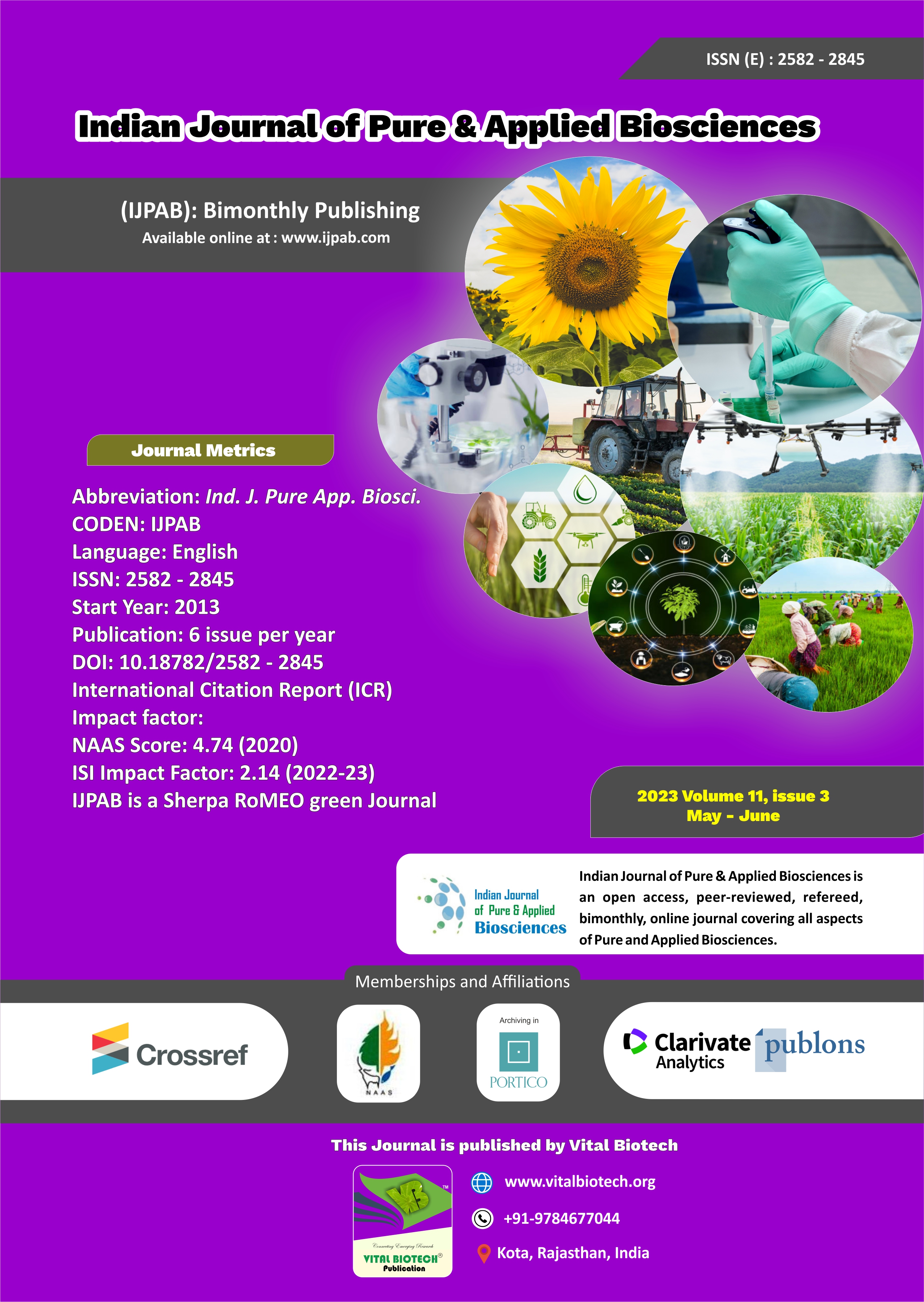-
No. 772, Basant Vihar, Kota
Rajasthan-324009 India
-
Call Us On
+91 9784677044
-
Mail Us @
editor@ijpab.com
Indian Journal of Pure & Applied Biosciences (IJPAB)
Year : 2023, Volume : 11, Issue : 3
First page : (82) Last page : (87)
Article doi: : http://dx.doi.org/10.18782/2582-2845.9009
Toxicity of Insecticides against Diamond Back Moth, Plutella xylostella in Laboratory and Field Conditions
Umaira Malik1, Maharukh Munawar1, Arfa Safder1* ![]() , Amber Arshad2, Sheeza Khalil1, Samreen Rana1
, Amber Arshad2, Sheeza Khalil1, Samreen Rana1
1Institute of Molecular Biology and Biotechnology, The University of Lahore, Pakistan
2Department of Zoology, Lahore College for Women University (LCWU), Pakistan
*Corresponding Author E-mail: arfasafder096@gmail.com
Received: 7.02.2023 | Revised: 16.04.2023 | Accepted: 27.04.2023
ABSTRACT
The diamondback moth, Plutella xylostella L., belongs to the family Plutellidae and the order Lepidoptera, which is a destructive pest all over the world and causes great problems in many countries and has great economic importance and its control costs approximately one billion dollars annually. The current experiment was performed on this pest to check the toxicity of Dimethoate, Emamectin, and Lufenuron insecticides on larvae of P. xylostella. The results showed that emamectin was the most toxic insecticide, followed by lufenuron and dimethoate in both laboratory and field conditions. The mortality rate of pests was low in field conditions as compared to laboratory conditions. The mortality percentage increased with the increase in the application time of insecticides. All the treatments were also observed to be significantly superior to the control.
Keywords: Plutella xylostella; Cabbage; Cauliflower; Insecticides; Mortality; Pakistan.
Full Text : PDF; Journal doi : http://dx.doi.org/10.18782
Cite this article: Malik, U., Munawar, M., Safder, A., Arshad, A., Khalil, S., & Rana, S. (2023). Toxicity of Insecticides against Diamond Back Moth, Plutella xylostella in Laboratory and Field Conditions, Ind. J. Pure App. Biosci.11(3), 82-87. doi: http://dx.doi.org/10.18782/2582-2845.9009


